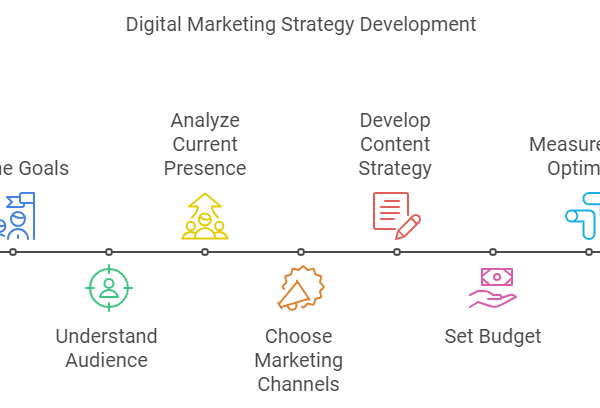
For novice students, venturing into the world of online class learning might be daunting due to the complex terrain of this new medium. This manual breaks down the intricacies and acts as a roadmap for people who are new to the world of online learning. From deciphering Virtual Learning Environments to distinguishing between synchronous and asynchronous learning, each section unfolds a new layer of understanding.
Explore the integral role of Learning Management Systems and learn the art of engaging in vibrant discussions on virtual forums. Discover the vast knowledge reservoir of Massive Open Online Courses and unravel the dynamics of webinars and virtual lectures. As we explore these aspects, our dictionary seeks to empower students so they can navigate the world of online learning with confidence. This guide not only clarifies the lingo but also gives students the tools they need to take control of their digital learning journey in a world where the need for online class help and assistance is growing.
Virtual Learning Environment (VLE): Navigating the Digital Classroom
The cornerstone of the enormous field of virtual education is the Virtual Learning Environment (VLE), which guides students through the many pathways of the online classroom. The features of a virtual learning environment (VLE) are explained in this section, along with how students can access course materials, participate in discussions, and turn in assignments. The increasing need for support and guidance during online classes necessitates knowing how to maneuver across this digital terrain.
Learners will gain insights into making the most out of their online learning environment, from synchronous interactions to asynchronous flexibility. Through this exploration, students gain the ability to navigate the complexity of the VLE and take charge of their digital learning process. Understanding the subtleties of the Virtual Learning Environment becomes essential for students who want to successfully traverse the digital classroom in an environment where the need for online class support is prevalent.
Synchronous vs. Asynchronous Learning: Finding Your Tempo
Understanding the difference between synchronous and asynchronous learning—two fundamental concepts that determine the speed of online education—is essential to navigating the digital academic environment. We analyze these learning modes’ subtleties in this part rather than just contrasting them. As they learn to embrace the flexibility of asynchronous learning and align their calendars with live sessions, students go on a self-discovery journey. With the increasing need for online course support, this investigation is crucial for students looking to achieve a healthy balance between their academic pursuits.
Students may discover their own pace and enhance their online learning experience by understanding the differences between synchronous and asynchronous learning. This will help them get one step closer to successful and self-directed learning. Understanding the rhythms of synchronous and asynchronous learning becomes essential for individuals navigating the digital learning environment in a setting where the need for online class assistance is prevalent.
LMS (Learning Management System): The Backbone of Online Education
Subtle but fundamental to the intricate web of online learning is the Learning Management System (LMS). This section explores the essential function of an LMS in arranging the virtual learning symphony. The LMS is the quiet architect sculpting the virtual classroom, producing tools for evaluation and progress tracking in addition to delivering course content with ease.
Understanding the workings of this crucial educational tool is essential for students navigating the digital realm, especially as the need for online class support grows. By realizing the full potential of an LMS, students may effectively interact with the contents, work together with classmates, and maintain organization while pursuing an online education. Deciphering the LMS will not only improve the student experience but also put them in a position to take full advantage of this technological backbone, leading to a more knowledgeable and efficient approach to online learning in a world where the demand for online class assistance is ubiquitous.
Discussion Boards and Forums: Fostering Digital Discourse
Discussion boards and forums are dynamic online learning environments that facilitate the digital dialogue necessary for group learning. This section highlights the value of these online forums where students can have thought-provoking discussions, pose probing questions, and exchange viewpoints. By acting as stimulants for discussion, these forums support a lively virtual community.
Learners looking for a full-fledged educational experience are finding that learning the art of participating in conversations is increasingly important as the demand for online class support grows. The emphasis of this part is on active engagement and effective communication as it walks students through the etiquette of online discourse. Understanding the potential of Discussion Boards and Forums not only enriches the learning environment but also empowers students to collaborate effectively, fostering a sense of connection and shared knowledge within the virtual classroom. This is especially important in the ever-evolving landscape of digital education, where the call for online class help resonates.
MOOCs (Massive Open Online Courses): Exploring Boundless Knowledge
In the broad realm of online education, Massive Open Online Courses, or MOOCs, are breaking through traditional barriers to learning and emerging as a source of limitless knowledge. This episode delves into the cutting-edge world of MOOCs, where learners can access a wealth of knowledge from internationally recognized academic institutions and professionals. MOOCs, which provide accessibility and flexibility, are now a crucial addition to conventional online courses. With the increasing demand for help with online classes, it is critical for students looking for a broad and varied educational experience to know how to take advantage of these free courses.
This section walks students through the process of smoothly incorporating MOOCs into their learning path in addition to examining their benefits and prominent platforms. Unlocking the potential of Massive Open Online Courses stands as a doorway to a world of information, enabling students to further their education and explore subjects outside the parameters of traditional coursework in a dynamic educational landscape where the need for online class assistance echoes.
Webinars and Virtual Lectures: Bridging the Distance in Real-Time
Webinars and virtual lectures become vital links that link teachers and students in real time in the dynamic world of online education. This section explains the value of these in-person, interactive meetings that encourage participation and immediacy despite being virtually remote. With the help of webinars and virtual lectures, students may engage in active learning, pose questions, and get immediate feedback from their teachers.
Gaining proficiency in utilizing these synchronous learning opportunities is essential for students looking for a more engaging and immersive learning environment, as the need for online class support continues to rise. In addition to examining the workings of virtual lectures and webinars, this section offers insightful advice on how to participate and take notes during these events. Knowing how to take advantage of the real-time connection between webinars and virtual lectures becomes essential for students in an environment where the need for online class assistance is prevalent. This will enhance their online learning journey by providing them with dynamic and interesting educational experiences.
Conclusion
Finally, this thorough manual explains the nuances of virtual learning and offers students a path forward as they begin their virtual learning experience. Through exploring the functions of learning management systems, discussion boards, and forums, as well as navigating virtual learning environments and comprehending the differences between synchronous and asynchronous learning, this glossary gives students the tools they need to successfully navigate the challenges of online learning.
Understanding these ideas is essential for a great educational experience as the need for online class support keeps rising. In an environment where technology is changing how we learn, this vocabulary is essential to realizing the full potential of online learning. Equipped with this understanding, students can interact with the virtual classroom with assurance, encouraging self-directed learning and a feeling of freedom. With the ever-changing landscape of online learning, this glossary is an invaluable tool for students hoping to succeed in the rapidly changing field of education.











